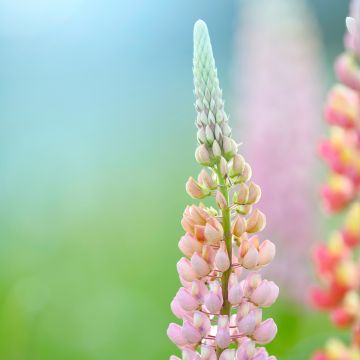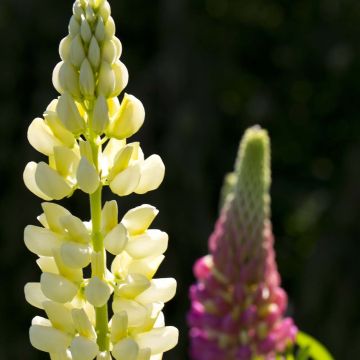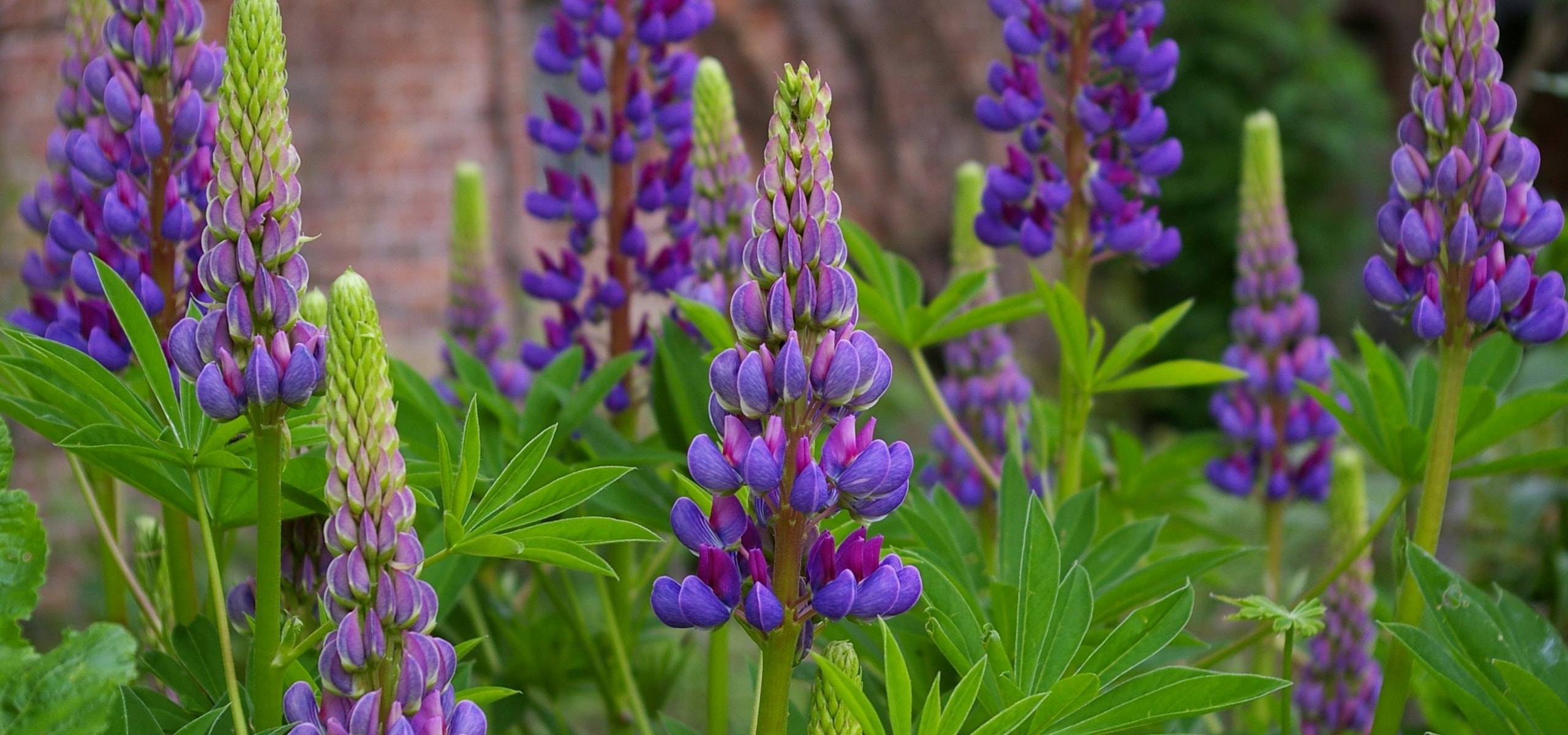
Succeeding in planting lupin
an elegant legume
Contents
The lupin (Lupinus polyphyllus) is a perennial plant native to North America, valued for its dense and colourful flower spikes. With its upright cluster-shaped flowers, the Lupin adds a splash of colour and cheer to any garden. It grows to a height of 80 to 90 cm (sometimes up to 1.20 m) and about 60 to 80 cm wide. It also has the advantage of being easy to grow and maintain. We explain which variety to choose, when and how to plant them, and how to care for them, so you can enjoy their magnificent flowers in your garden!
To learn everything about the lupin and its cultivation, check out our complete guide: “Lupin: sowing, planting, care”
Which variety of lupin to choose?
There are many varieties of lupins, differing notably in their shades as well as their height, ranging from about 50 cm to 1 m. For small spaces, the series ‘Minarette’ offers compact specimens of 30 to 60 cm, available in multiple colours. The Lupinus arboreus, more bushy, forms a beautiful spreading clump of 1.50 m crowned with light yellow clusters with an intoxicating fragrance.
Yellow-flowered lupins
‘Le Chandelier’ and ‘Arboreus’ produce yellow flowers with a strong yellow banner.
White lupins
The lupin ‘La Demoiselle’ produces large upright spikes of creamy white flowers with a peppery fragrance in June-July, perfect for adding verticality and a touch of light to borders and beds. ‘Gallery White‘ and ‘West Country Polar Princess‘ also produce magnificent white spikes that punctuate any perennial or bush bed with bright candles.
Pink or red-flowered lupins
‘La Châtelaine’ is recognisable by its pink flowers with a white banner. ‘Mon Château’ and ‘Gallery Red’ produce beautiful red flowers.
Blue lupins
‘Le Gentilhomme’ has blue flowers with a white banner. ‘Gallery Blue‘ and ‘West Country Persian Slipper‘ are beautifully coloured with vibrant blue-violet flowers.

Lupin ‘Mon Château’
Read also
Lupin: sowing, planting and careWhere to plant the lupin?
This majestic perennial thrives fully in full sun or partial shade in borders and beds. Its elegant, upright habit makes it a superb structural plant, particularly suited to cottage gardens or country-style gardens. Lupins appreciate fresh, well-drained, and slightly acidic soils. Avoid calcareous soils where they quickly decline. You can harmoniously combine them with delphiniums, foxgloves, or peonies to create stunning floral displays. For successful planting, allow a space of 40 to 50 cm between each young plant, as their taproots require room to develop properly.
Discover other Lupinus - Lupin
View all →Available in 2 sizes
Available in 2 sizes
Available in 1 sizes
Available in 3 sizes
Available in 1 sizes
Available in 3 sizes
Available in 1 sizes

Available in 2 sizes
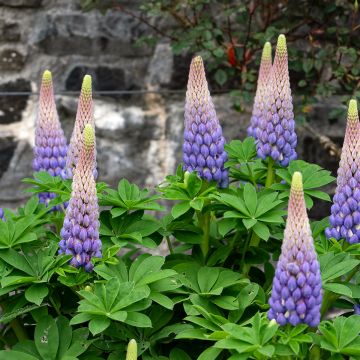
Available in 1 sizes
Available in 1 sizes
When to plant lupin plants?
The Right Planting Seasons
The ideal periods for planting lupins extend from March to May in spring, or from September to October in autumn. Spring planting allows the young plants to establish their roots well before the summer heat, while autumn planting encourages deep root development before winter. In mild climates, favour autumn planting which will yield earlier and more generous flowering the following spring. In regions with harsh winters, opt for spring planting after the last frosts.
The young plants require increased monitoring during the first weeks following their installation. Mulching around the plants will protect their roots and maintain consistent moisture, which is essential for their successful establishment.
Does the lupin fear frost?
The lupin is particularly hardy and can withstand temperatures dropping to -15°C once well established. This resistance varies according to the plant’s stage of development. Young shoots tolerate temperatures of -10°C in healthy soil, but become more sensitive after the 7-8 leaf stage, potentially suffering from -5°C. To enhance their natural cold resistance, good drainage remains essential. In regions with harsh winters, a light mulch around the base is sufficient to protect the roots, without the risk of suffocating the collar which fears excess moisture.
Read also
Planting Perennials and BushesHow to plant lupins in a pot?
- Carefully prepare the planting hole, making it twice as wide and deep as the root ball.
- At the bottom, place a layer of gravel or clay pebbles to ensure optimal drainage.
- Mix garden soil with coarse sand in a ratio of 2/3 – 1/3 to lighten the substrate.
- Gently remove the young plant from its container after moistening the root ball.
- Position it in the centre of the hole, ensuring that the collar is level with the soil surface.
- Fill in with the prepared soil mix, then moderately firm the soil around the base. Planting too deeply would weaken the plant and encourage collar rot.
- A good watering will complete the installation.
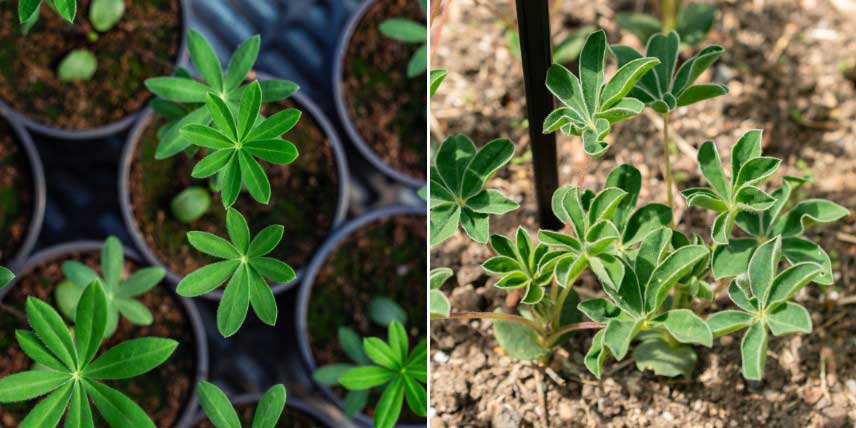
What distance should be between lupin plants?
To create a harmonious flowerbed, maintain a spacing of 40 to 50 cm between each lupin plant. This distance allows the taproots to develop without competition and ensures good air circulation, limiting the risk of diseases. In particularly rich soils, you can reduce the gap to 35 cm for compact varieties. Too close spacing would encourage the spread of powdery mildew, while planting too far apart would lose visual impact. For arborescent lupins like Lupinus arboreus, which can reach 1.5 m, allow up to 80 cm between plants.
When and how to sow lupin seeds?
When to sow lupins?
Sowing lupins is ideally done in two distinct periods: in spring from April to mid-May, or in late summer from August to September.
How to sow?
- For optimal germination, soak your seeds in lukewarm water for 24 hours before sowing.
- In open ground, place 3 to 4 seeds per cluster spaced 40 cm apart, at a depth of 1 cm in soil lightened with sand.
- Russell hybrid lupins require special attention when sowing under cover. Use deep buckets filled with a mixture of potting soil and sand, maintain a temperature of 18°C and constant humidity until germination.
- Keep only the most vigorous young plant per bucket, as its powerful taproot needs space to develop.
The calendar for your lupins
- April-May: Plant your Lupins after the last frosts. Water regularly during the first weeks after planting.
- June-July: This is the flowering period. Water your Lupins regularly during dry spells. Remove faded flowers to encourage the lupin to produce new flowers.
- August: As soon as flowering is finished, cut off the dry inflorescences, unless you want to collect seeds.
- February-March: This is the time to sow if you have collected seeds (to soften the integument of the seed, rub the seeds with sandpaper just before sowing). Place the seeds in clusters of three directly in situ. You will only keep the most vigorous young plants.
How to make lupins bloom again?
To encourage your Lupins to flower again, regularly remove the faded flowers. This will encourage the plant to produce more flowers. After flowering, cut the stems to about 5 cm above the soil, leaving the foliage. They may flower again in autumn if you water them well.
The Lupin is a perennial plant, which means it can live for several years. However, it tends to become exhausted after a few years. To maintain abundant flowering, it is recommended to divide the clumps every three to four years.
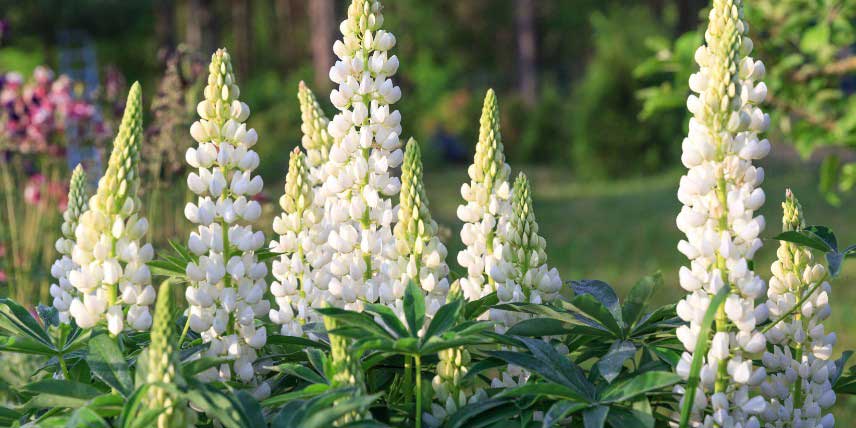
- Subscribe!
- Contents

































